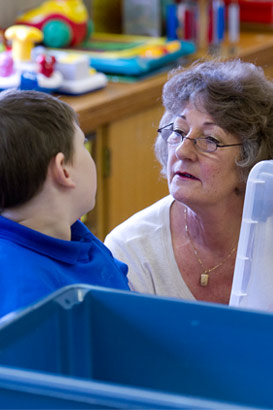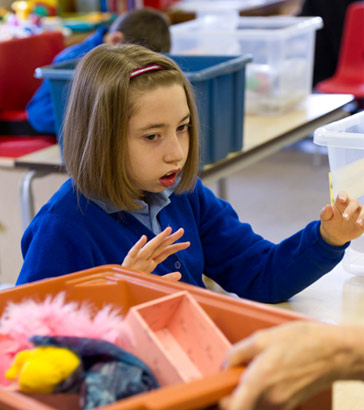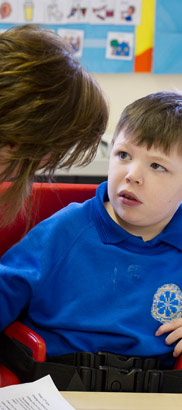
As a caregiver you are a link that helps children make sense of their
world by creating boundaries and routines.
There are different sorts of boundaries in all our worlds:
- Space boundaries within which we move.
- Time boundaries describing our routines and the order in which we do things.
- Interpersonal boundaries restricting how others interact with us.

As a caregiver you provide a medium of continuity between the past, the present and the future, helping the child to predict
what is coming next.
It is through experience that a child can predict and make sense of their world and in order to do this they rely upon, as
we all do, consistent patterns and routines.
We all have our routines that make us feel comfortable about our day, e.g. that first cup of tea or a walk with the dog in
the evening.
Think about how you feel if something gets in the way of that routine.

In order to offer a sense of security, a child must know that
there are limits to their world.
They might not like them and they may (literally)
kick against them and test them all the time. The more insecure they feel
the more they will kick. But, it is only by knowing that there are firm
and consistent boundaries that they can make sense of what is happening
around them.
They therefore rely upon the caregivers to provide this for
them. This helps them to learn to predict their world and reduce levels
of anxiety. The more they can feel relaxed about what is happening next
the less they will feel the need to test the boundaries.
- Work in pairs with one partner blindfolded (or at least with eyes shut).
- Hold your partner's hand and in silence lead them around an open space with your partner keeping their eyes closed for approximately 20-30 seconds. When you stop, ask your partner to open their eyes and reflect upon how it felt to be led around in this way.
- Repeat the task, with your partner walking with their eyes closed, but this time stand alongside your partner and cradle their arm.
- As they walk give a running commentary on exactly what you are doing and what you do next as you lead your partner around the space. After approx 20-30 seconds stop and once again ask your partner to reflect upon how it felt to be led in this way.
- Now imagine a child who is totally blind and has never left their home. They know everything there is to know about that house. What if one morning they wake up in the middle of a very large field? How would they feel? What would they understand? How would they make sense of where they are or what to do? How different is this experience from that of a child with complex needs starting school, or moving to a new classroom?

At birth all children are highly dependent upon those who care for them.
As they grow up they become more and more independent. However, children achieve independence at different rates and some
children will never achieve full independence.
Some children with complex needs will continue to rely on carers to help them:
- With basic daily living skills, eating, toileting etc., and/or
- Make sense of what to them is a scary and unpredictable world.

An ordered and secure environment that offers consistency provides the opportunity for predictability and independence
Being able to predict and prepare for change is important to everyone. Without the opportunity to exert control and to predict
what will happen in an environment, we would all be living under continuous stress. We would constantly look for indicators
and predictors of change, even if none existed.

All behaviour has meaning and it is the way in which we attach meaning to it that will determine how effective we are
in dealing with inappropriate behaviours.
For some children with challenging behaviour, repeated patterns become a form of comfort and stimulation, creating a situation
for them in which they can predict what is going to happen next.
Repetitive behaviour can also be used as a way of shutting out the unpredictable world and substituting it with a predictable,
manageable and comfortable one.